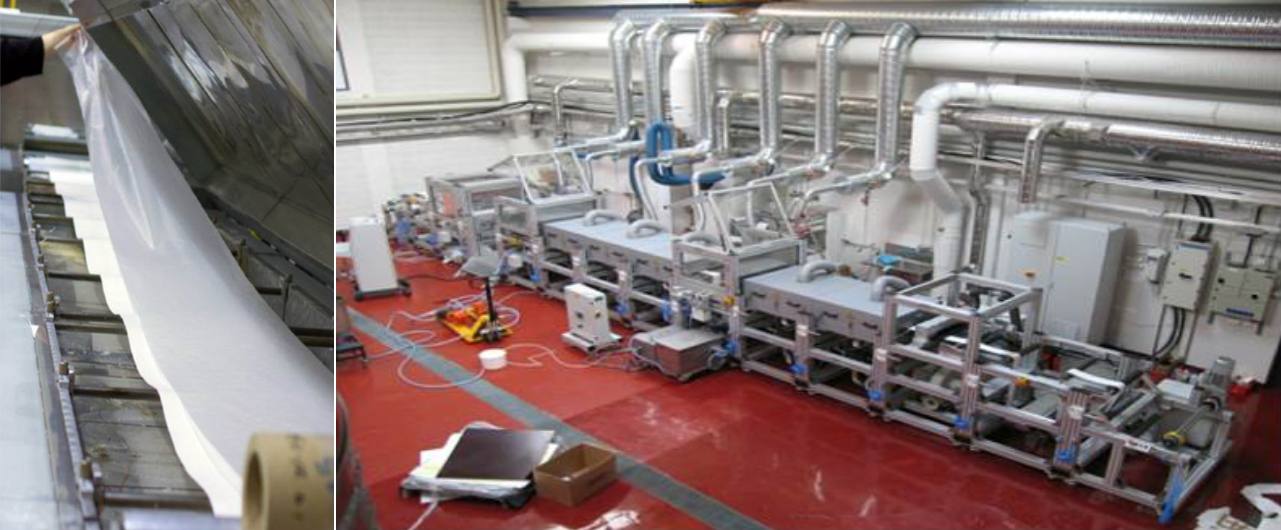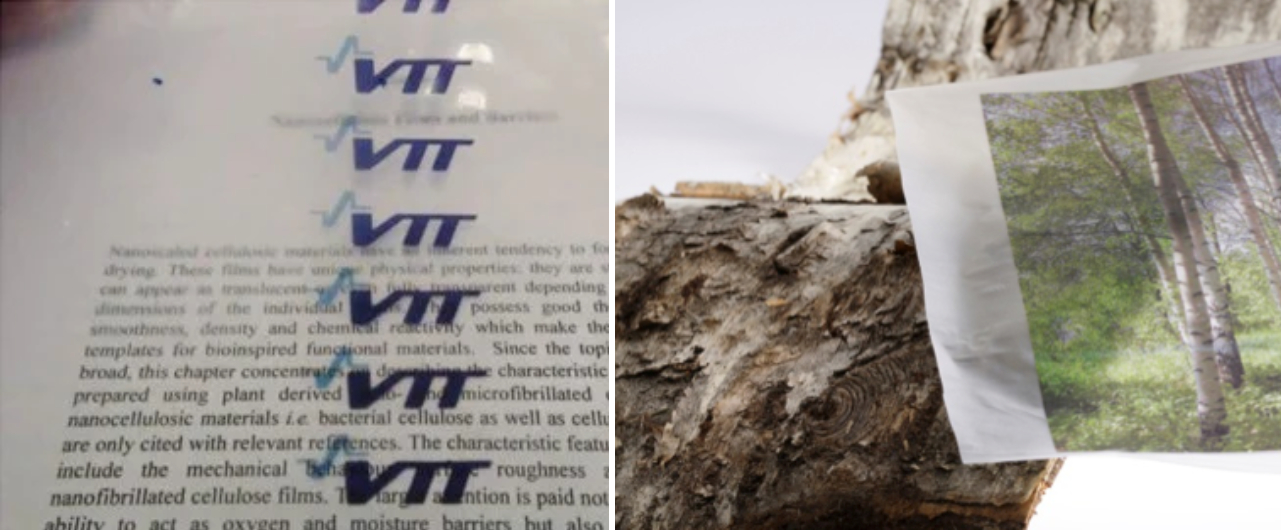
Applications for strong, lightweight MFC films
Ole Martin Kristiansen | January 7, 2020
Microfibrillated cellulose (MFC) has a good film-forming ability, where the film is strong and light. In addition, the films are opaque, translucent or even transparent depending on the thickness of the film and type of MFC. They also show good oxygen barrier properties. Moreover, MFC can be combined with different polymers or fillers to obtain even more versatile material. In this post, we want to show the potential of MFC films in various applications. Let’s start by discussing how MFC films can be made and then see what kind of applications these films may have.
Manufacturing of the films
Different kind of techniques can be used to produce MFC films. One essential aspect of the film-making is that the fibers should be evenly dispersed. The theoretical strength of the cellulose microfibrils is very high, 7-8 GPa (see the book by A. Dufresne “Nanocellulose – From nature to high performance tailored materials”). In the MFC suspension, the fibers are in the three-dimensional network and upon drying the fibers are glued together by interfibrillar hydrogen bonds resulting in very strong films. The strongest films are obtained when the fibers are homogeneously dispersed through the whole volume before making the film.
If MFC is used in composite film, the fibers should be well dispersed in the surrounding matrix and have a good adhesion to it. Researchers have employed simple methods, like casting-evaporation, filtration and hot-pressing, and spin-coating. All these methods give good quality MFC films but they are not very practical in larger scale production.
The Technical Research Centre in Finland (VTT) has developed a continuous process for producing MFC film (see Figure 1). They can manufacture the film at semi-pilot scale and the technology is based on casting the film on a plastic substrate (patented technology WO2013060934 A2). The resulting film is transparent and can be used for printing like is shown in Figure 2.

Figure 1. Manufacturing of MFC films at semi-pilot scale, based on casting on a plastic substrate (patented technology WO2013060934 A2) (source of the pictures: VTT).

Figure 2. MFC films manufactured by VTT's continuous process. The films are transparent or translucent and strong enough for printing (Source of the pictures: VTT).
Possible applications for MFC films
MFC films or composite films containing MFC have potential in many different applications, varying from composite materials to solar panels. Below, I will present three examples of potential uses:
Food packaging
MFC films are strong and light with good oxygen barrier properties. This means that it is a good candidate for the packaging industry, especially in food packaging. However, the oxygen barrier properties of MFC decrease in humid conditions. Therefore, it is wise to combine it with polymers that can resist humidity. MFC films can, for example, be used in multilayer materials to obtain the desired oxygen barrier properties together with polymers that can give the moisture barrier. Another option is to modify the surface of MFC fibers to make it more hydrophobic, either by physical adsorption or chemical modification. More information on this topic can be found, for instance, in a review by Nair et al. 2014 and PFI’s Newsletter.
Printed electronics
Printed electronics is an emerging technology with a big potential to change our everyday life. Acreo Swedish ICT, a Swedish information and communication technology company, lists the following use areas on their web page:
- printed labels for Internet of Things containing a small antenna, chip and battery,
- printed display which could be used in tracking of packages,
- one-time analysis for medical purposes and smart pharmaceutical packages, and
- sensor for buildings measuring, for instance, moisture.
Printed electronics have some special requirements for the substrate material: it needs to have a flexible and smooth surface, dimensional stability and be easy to print on. The ink should not penetrate too much into the paper since large penetration reduces the conductivity of the ink. In addition, the spreading of the ink should be minimal. Torvinen with her co-workers (Torvinen et al. 2012) developed a substrate for printed electronics by using MFC together with two inorganic fillers, precipitated calcium carbonate and kaolin. The resulting material contained up to 90% of the fillers. Scanning electron microscope (SEM) images showed that MFC fibers formed a network around the inorganic fillers, making the structure strong and flexible. In addition, the material had a smooth surface, showed good printability, and had good dimensional stability.
Separator films for batteries
MFC is also used as a component in separators for lithium ion batteries and secondary alkaline batteries. The separator in the battery mainly acts as an insulator between the two electrodes and allow the transportation of the ionic species between the electrodes. The typical requirements for separators include thermal, chemical and mechanical stability; these are needed for reliable separation of the closely spaced opposing negative and positive electrodes. It should also have resistance to organic solvents, good wettability and be thin. In addition, the separator should be porous enough to allow the electrolyte ions to pass through. MFC can improve the thermal and dimensional stability of the separator, enabling thinner films. At the same time, it tolerates organic solvents and does not conduct electricity.
Mitsubishi Paper Mills is using MFC in their NanoBase nonwoven fabric for battery separator. They also have patents where they describe the use of MFC in these separator films. In one of the patents, MFC is in the non-woven fabric together with polyolefin fibers (patent number JPH10144282 A) which give excellent electrolyte holding property and sufficient ventilating property. In the second patent, they have made the separator from the magnesium ceramic particles and MFC (patent number JP2016062689A).
A lightweight and multifunctional material
The need for lightweight, multifunctional and sustainable materials is growing due to the increased environmental concerns. MFC films are a competitive choice for many highly engineered materials which need strength, flexibility, barrier properties or good printability.
Want to know more?
Editors note: This post was originally written by Anni Karppinen, and published in September 2016. We have refurnished and polished it a bit to make it more up to date.
